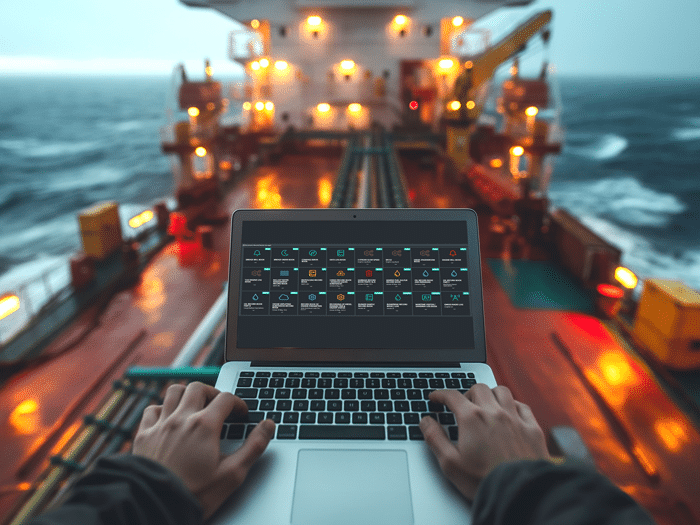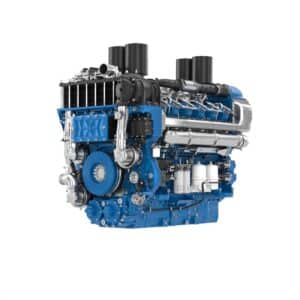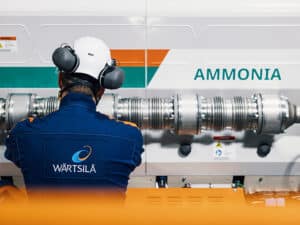
A new era for shipping demands a focus on compliance and performance
Written by Heather Ervin
SPONSORED CONTENT: The right software solution can help operators manage the dual demands of regulatory compliance and commercial opportunity.
By Staci Satterwhite, ABS Wavesight CEO
The shipping industry faces a once in a generation challenge: it must progressively reduce vessel carbon emissions while improving voyage performance. The ability to achieve this kind of transformation requires change on an organizational level—and the right support from stakeholders with a solid track record of delivery.
The tools that fleet operators need cover a laundry list of data and technologies, but the important part is the ability to transform disparate pieces of information into actionable insights to support better business decisions.
The ability to achieve performance enhancements from a single floating asset to a complete fleet is an essential component of a digital strategy. The need for improvement stretches from daily routines and maintenance to the commercial drivers that sit behind investment and chartering decisions.
Another important component is the ability to demonstrate compliance with increasingly rigorous regulations. As regulation moves from prescriptive rules towards financial incentives and penalties, operators need to understand where the risks lie and how to manage them.
Understanding the challenge
Supporting operators with solutions that help enable performance and help ensure compliance requires a standardized approach to data—something the industry largely lacks—that can draw on diverse sources and present the information and resulting insights.
This enables users to identify where data gaps might occur and identify inconsistencies. Only if a platform can demonstrate credibility, reliability and trust will industry see a case for investment.
There is a need too, for a modern system architecture capable of delivering the best solution in the shortest time. This demand has underpinned the shift toward the software as a service (SaaS) approach which lowers the total cost of ownership for the buyer as they can subscribe to a platform without also having to maintain it, which is especially important with the ever-changing regulatory landscape.
Open APIs allow connectivity and aggregation from different data sources, and when users spend less time figuring out how to work with something, they can spend more time sharing information and knowledge.
Compliance
As the demands of regulatory compliance in shipping increase further, they also become more complicated for operators. The industry is comfortable with reporting historical emissions data but the burden for ship and shore will increase once the European Union’s Emissions Trading System moves into full scale operations.
Beyond that, the Fuel EU Maritime regulation creates a more complicated landscape in which to operate, with multiple options for compliance. Beginning in 2025, ships operating with a GHG intensity within the EU will have to meet Well-to-Wake carbon-equivalent emissions limits or incur a financial penalty. The threshold value will be reduced based on a sliding scale every five years. Compliance surpluses – generated when vessels undershoot the GHG intensity limit – can be linked to other vessels with a negative balance, which have therefore built up a compliance deficit. These surpluses can be sold to other operators or used to extend the viability of older portions of the fleet in a process known as pooling.
ABS research indicates the power of pooling will be significant, hugely rewarding pioneers of alternative fuel technologies. Depending on a range of variables, a wind-assisted vessel may generate sufficient surplus to offset a traditionally propelled equivalent vessel. A light fuel oil vessel operating with 30% biofuels may be able to generate sufficient surpluses to offset 10 vessels, while running 30% green methanol may allow you to offset 15 vessels up to 2030. And this is not only a new reality for those trading in European waters, the International Maritime Organization has also indicated it intends to introduce its own version that includes a global carbon levy in 2027.
One thing is certain: decarbonization strategy 1.0 has been a relatively simple affair focusing on managing and accounting to CII; in the future, decarbonization 2.0 will be much more complicated focusing on the well-to-wake carbon equivalent emissions per megajoule of energy and the compliance flexibility. ABS Wavesight is built to handle both performance and compliance.
Performance
By this stage in the digitalization and decarbonization cycle, vessel operators may be leery of the products being sold to them.
Understandably there’s a range of maturity in adoption; some operators have their own systems; others have made investments in third party solutions. It is likely though, that the majority of companies are still figuring out how to find a solution that fits their profile and implement it.
Among the most common complaints we hear is ‘I see data but so what?’ Displaying data is the easy part, the value is in making that data consumable enough to drive business decisions. There are many potential outliers and disruptors to accurate data that users need to recognize in order to interrogate and investigate easily.
A huge contribution to success is being able to connect the shore personnel to the fleet in as close to real time as possible. Not having to wait until all the data is in before acting creates opportunities for better and more transparent decision-making.
ABS Wavesight
As the pressure for higher performance and regulatory compliance grows, we’ve been listening and thinking about how we can help customers adopt a platform that addresses both challenges.
ABS Wavesight was founded to bring together deep industry knowledge of a class leader with excellence in software products. In doing so, we’ve been able to help customers gather the data that creates visibility on their fleets and drives decisions for compliance and daily shipping operations.
ABS is grounded in regulation, certification, compliance and safety; we can help customers address their fleet performance and optimization needs with confidence.
ABS Wavesight’s My Digital Fleet is powerful and secure fleet performance software that combines comprehensive operational data with environmental, class and regulatory insights from ABS to quantify risk and make decisions with confidence. It helps enhance operational efficiency, achieve fleet decarbonization goals, and streamline compliance—all within one platform.
Its SaaS architecture provides reliable access to the data that users need along with high value insights to support better decision-making.
Those insights are set to move from forecasting to supporting predictability in the near future, reflecting the ability to create ‘what-if’ voyage scenarios which can play out in real-time.
From securing more competitive charters to the timing of maintenance and the ability to predict compliance costs, we believe better, data-driven decisions are needed.




